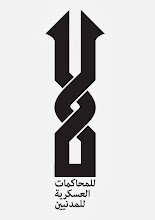Mada Masr
Egypt’s environment minister proposes breeding crocodiles for export to boost economy
Wednesday November 30, 2016
Jano Charbel
Amid the dollar crisis and a shortage of hard currency, Egypt’s environment minister proposed the creation of crocodile farms on Lake Nasser in the country’s far south to breed the reptiles for export, estimating each crocodile could fetch up to $US400.
Khaled Fahmy’s proposal followed calls from parliamentarians, including the head of the parliamentary committee for energy and the environment Talaat al-Swedy, for tighter regulation of the illegal hunting and trade of crocodiles in Egypt.
The Nile crocodile was previously endangered, and categorized as an Appendix 1 animal, meaning it could not be legally traded, Fahmy explained in a televised interview with the privately owned Al-Hayah satellite channel on Sunday. But, in 2010 this was lifted, categorizing Nile crocodiles as a threatened species that can be bred and traded with permission from authorities, in keeping with the Convention on the International Trade in Endangered Species of Wild Fauna and Flora (CITES), to which Egypt is a signatory, Fahmy added.
In order for Egypt to obtain permission and an export quota from CITES for the trade, farms for the breeding of Nile crocodiles must be established and approved.
A timeline for developing the farms and commercial export plans are to be established in coordination with an unnamed “national company,” which Fahmy said is due to present to CITES representatives soon. The ministry is also planning to bring in experts from Zambia and South Africa to act as supervisors for the initiative.
Egypt does not require parliamentary approval for the export of crocodiles, according to the minister, as regulations are included within the CITES protocol, which Egypt ratified in 1978. If approval is not given from convention officials, however, the trade is considered illegal.
A representative from the Environment Ministry, Loay Sayed, told the privately owned Youm7 news portal on Sunday there are currently around 3,000 crocodiles in Lake Nasser.
After news spread that the Nile crocodile is no longer classified as an endangered species, a number of fishermen began to illegally hunt them in Lake Nasser, selling them for around US$8. If breeding is regulated, they are likely to have higher quality skins that could fetch significantly more, Fahmy speculated.
The minister informed the parliamentary environment committee that he plans to have the crocodile farms ready for global exports within four years.
The first stage of the initiative will involve breeding the reptiles, Sayed said. After that, by 2018, the eggs will be transferred from the nurseries, before the crocodiles are exported, around 2020.
The Nile crocodile is the second largest living reptile on earth, after the saltwater crocodile. On average, adult Nile crocodiles measure between three and five meters long, and can weigh between 200 to 750 kilos.
Although they are mostly found in Lake Nasser, there have been individual crocodiles sighted in the Nile as far north as Cairo.
In the 1950s the species was almost extinct, but after the construction of the Aswan High Dam in the 1960s, and their subsequent isolation in Lake Nasser, Nile crocodiles started to make a comeback.
The Nile crocodile was revered in ancient Egypt, depicted in images of the crocodile-headed deity Sobek.
Egypt’s environment minister proposes breeding crocodiles for export to boost economy
Wednesday November 30, 2016
Jano Charbel
Amid the dollar crisis and a shortage of hard currency, Egypt’s environment minister proposed the creation of crocodile farms on Lake Nasser in the country’s far south to breed the reptiles for export, estimating each crocodile could fetch up to $US400.
Khaled Fahmy’s proposal followed calls from parliamentarians, including the head of the parliamentary committee for energy and the environment Talaat al-Swedy, for tighter regulation of the illegal hunting and trade of crocodiles in Egypt.
The Nile crocodile was previously endangered, and categorized as an Appendix 1 animal, meaning it could not be legally traded, Fahmy explained in a televised interview with the privately owned Al-Hayah satellite channel on Sunday. But, in 2010 this was lifted, categorizing Nile crocodiles as a threatened species that can be bred and traded with permission from authorities, in keeping with the Convention on the International Trade in Endangered Species of Wild Fauna and Flora (CITES), to which Egypt is a signatory, Fahmy added.
In order for Egypt to obtain permission and an export quota from CITES for the trade, farms for the breeding of Nile crocodiles must be established and approved.
A timeline for developing the farms and commercial export plans are to be established in coordination with an unnamed “national company,” which Fahmy said is due to present to CITES representatives soon. The ministry is also planning to bring in experts from Zambia and South Africa to act as supervisors for the initiative.
Egypt does not require parliamentary approval for the export of crocodiles, according to the minister, as regulations are included within the CITES protocol, which Egypt ratified in 1978. If approval is not given from convention officials, however, the trade is considered illegal.
A representative from the Environment Ministry, Loay Sayed, told the privately owned Youm7 news portal on Sunday there are currently around 3,000 crocodiles in Lake Nasser.
After news spread that the Nile crocodile is no longer classified as an endangered species, a number of fishermen began to illegally hunt them in Lake Nasser, selling them for around US$8. If breeding is regulated, they are likely to have higher quality skins that could fetch significantly more, Fahmy speculated.
The minister informed the parliamentary environment committee that he plans to have the crocodile farms ready for global exports within four years.
The first stage of the initiative will involve breeding the reptiles, Sayed said. After that, by 2018, the eggs will be transferred from the nurseries, before the crocodiles are exported, around 2020.
The Nile crocodile is the second largest living reptile on earth, after the saltwater crocodile. On average, adult Nile crocodiles measure between three and five meters long, and can weigh between 200 to 750 kilos.
Although they are mostly found in Lake Nasser, there have been individual crocodiles sighted in the Nile as far north as Cairo.
In the 1950s the species was almost extinct, but after the construction of the Aswan High Dam in the 1960s, and their subsequent isolation in Lake Nasser, Nile crocodiles started to make a comeback.
The Nile crocodile was revered in ancient Egypt, depicted in images of the crocodile-headed deity Sobek.
















No comments:
Post a Comment